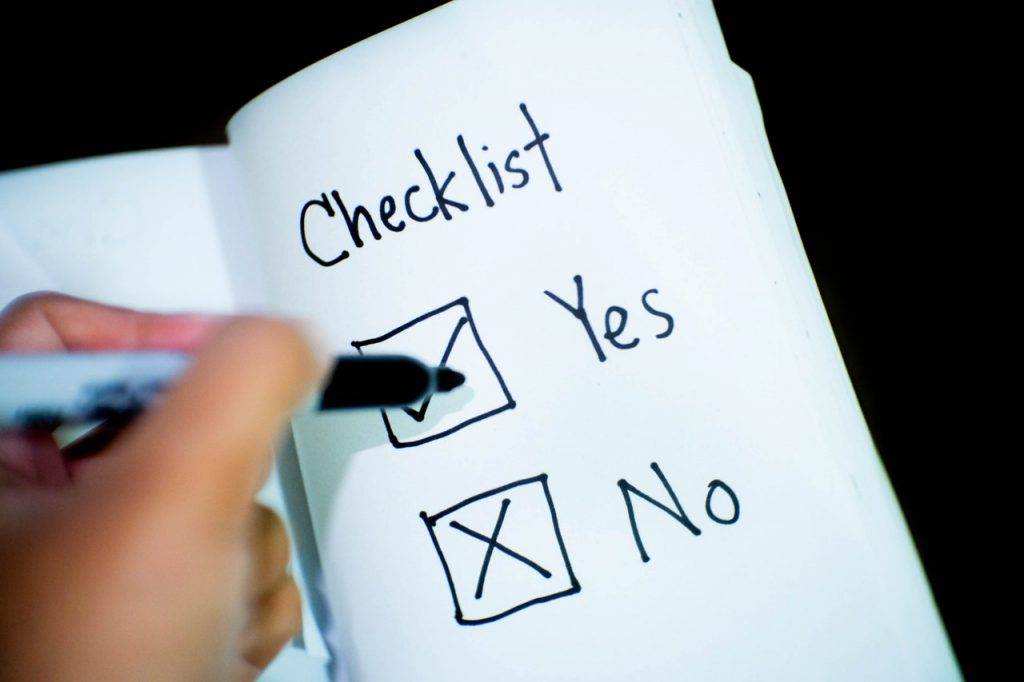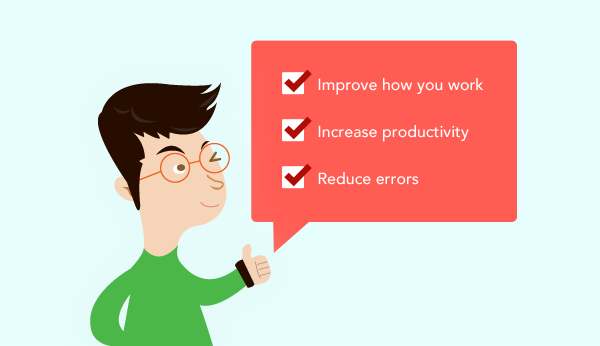Mistakes Using Checklist Examples
You might think that using checklists like registry checklists are as useless as aglets, but they can actually be pretty useful if they are able to fully cover a wide range of responsibilities that you need to fulfill before you can call it a day or move on and do the next task that was assigned to you. Yes, they might seem tedious to do and it takes some extra effort to actually make these checklists but they are well worth the price because there are so many possibilities that can go wrong simply because you never even made something like a checklist for doing these things.

While it is true that through continuous repetition of a certain set tasks no matter how difficult would result to you doing things in a reflexive manner, no one is exempted from eventually making a mistake or two or even more which could be a result of multiple factors like being complacent or something unpredictable just happened to name a few.
It is only natural for us to do these things since we are only human and it is a part of our nature. Knowledge and work experience are invaluable but it never hurts to have some form of assurance or reminder to make sure that we are able to do our tasks in the most effective and efficient manner possible or to have as few errors as possible. So here are a few ways in which you will be able to use blank checklists so that you are able to improve your efficiency and reduce mistakes as much as you possibly can.
Experience It First
You need to be able to experience the routine or the tasks that were laid out to you for you to be able to create the checklist. You can’t just blindly add a task without knowing how it to do it in the first place.
When you do the task you will not only gain the knowledge of knowing how it is done but also other bits of information that might be useful and could potentially have a place in the overall checklist. Besides, the more times you do the task at hand, the more you would be able to familiarize yourself with how to do it in the most efficient manner.
Study a Bit
It never hurts to do some research on you are going to go about executing the supposed task in the checklist. A little bit of knowledge can definitely go a long way and can give you a big edge in terms of initiative and preparation.
You will also be able to know some extra bit of information that would give you a new perspective on how you would go about doing those tasks. The learning agenda also would not be limited to just the how-to’s but also the do-not’s. You can see for yourself the things that can potentially go wrong since anything can happen according to the laws of physics and maybe karma.
Give It a Fun Twist
It is quite boring to just make a normal checklist template that you can probably just see every day. It kinda makes the whole experience of using a checklist feel bland and mundane and it may not be the whole point of the checklist but it will eventually make you stop using one just because of boredom.
So a good solution for that would be to create a checklist that can be fun like adding “Then eat a banana” at the end of every task. Make it personal and unique, make it match your quirks and disposition so that there the checklist feels alive to you. You can even give it some cool drawing or designs so that you will at least have something fun to look at while you are going through the whole list.
Add Some Solutions
There would be instances where things do not go as planned and instead of panicking and losing your sanity about it, and some possible solutions to your checklist beforehand after you have done some research on what could go wrong when you are doing some specific tasks.
These solutions can be like subcategories which are not needed to be checked off unless something went wrong. In fact, they do not even need to be checked off at all because they could just be like some tips or in case of emergency information that is in your printed checklist or digital checklist screen, especially for safety checklists or quality checklist. Just have it handy and it never hurts to be a bit prepared.
Do Not Forget to Review
Once you have gone through everything on the whole checklist, it never hurts to double check or even triple check everything so that you are sure that everything was done. It never hurts to make sure because it would be much worse and it would lead to more work if you found out something went wrong later on despite assuming you have finished everything in the checklist.
Mistakes Using Checklist Examples

You might think that using checklists like registry checklists are as useless as aglets, but they can actually be pretty useful if they are able to fully cover a wide range of responsibilities that you need to fulfill before you can call it a day or move on and do the next task that was assigned to you. Yes, they might seem tedious to do and it takes some extra effort to actually make these checklists but they are well worth the price because there are so many possibilities that can go wrong simply because you never even made something like a checklist for doing these things.

While it is true that through continuous repetition of a certain set tasks no matter how difficult would result to you doing things in a reflexive manner, no one is exempted from eventually making a mistake or two or even more which could be a result of multiple factors like being complacent or something unpredictable just happened to name a few.
It is only natural for us to do these things since we are only human and it is a part of our nature. Knowledge and work experience are invaluable but it never hurts to have some form of assurance or reminder to make sure that we are able to do our tasks in the most effective and efficient manner possible or to have as few errors as possible. So here are a few ways in which you will be able to use blank checklists so that you are able to improve your efficiency and reduce mistakes as much as you possibly can.
Experience It First
You need to be able to experience the routine or the tasks that were laid out to you for you to be able to create the checklist. You can’t just blindly add a task without knowing how it to do it in the first place.
When you do the task you will not only gain the knowledge of knowing how it is done but also other bits of information that might be useful and could potentially have a place in the overall checklist. Besides, the more times you do the task at hand, the more you would be able to familiarize yourself with how to do it in the most efficient manner.
Study a Bit
It never hurts to do some research on you are going to go about executing the supposed task in the checklist. A little bit of knowledge can definitely go a long way and can give you a big edge in terms of initiative and preparation.
You will also be able to know some extra bit of information that would give you a new perspective on how you would go about doing those tasks. The learning agenda also would not be limited to just the how-to’s but also the do-not’s. You can see for yourself the things that can potentially go wrong since anything can happen according to the laws of physics and maybe karma.
Give It a Fun Twist
It is quite boring to just make a normal checklist template that you can probably just see every day. It kinda makes the whole experience of using a checklist feel bland and mundane and it may not be the whole point of the checklist but it will eventually make you stop using one just because of boredom.
So a good solution for that would be to create a checklist that can be fun like adding “Then eat a banana” at the end of every task. Make it personal and unique, make it match your quirks and disposition so that there the checklist feels alive to you. You can even give it some cool drawing or designs so that you will at least have something fun to look at while you are going through the whole list.
Add Some Solutions
There would be instances where things do not go as planned and instead of panicking and losing your sanity about it, and some possible solutions to your checklist beforehand after you have done some research on what could go wrong when you are doing some specific tasks.
These solutions can be like subcategories which are not needed to be checked off unless something went wrong. In fact, they do not even need to be checked off at all because they could just be like some tips or in case of emergency information that is in your printed checklist or digital checklist screen, especially for safety checklists or quality checklist. Just have it handy and it never hurts to be a bit prepared.
Do Not Forget to Review
Once you have gone through everything on the whole checklist, it never hurts to double check or even triple check everything so that you are sure that everything was done. It never hurts to make sure because it would be much worse and it would lead to more work if you found out something went wrong later on despite assuming you have finished everything in the checklist.

